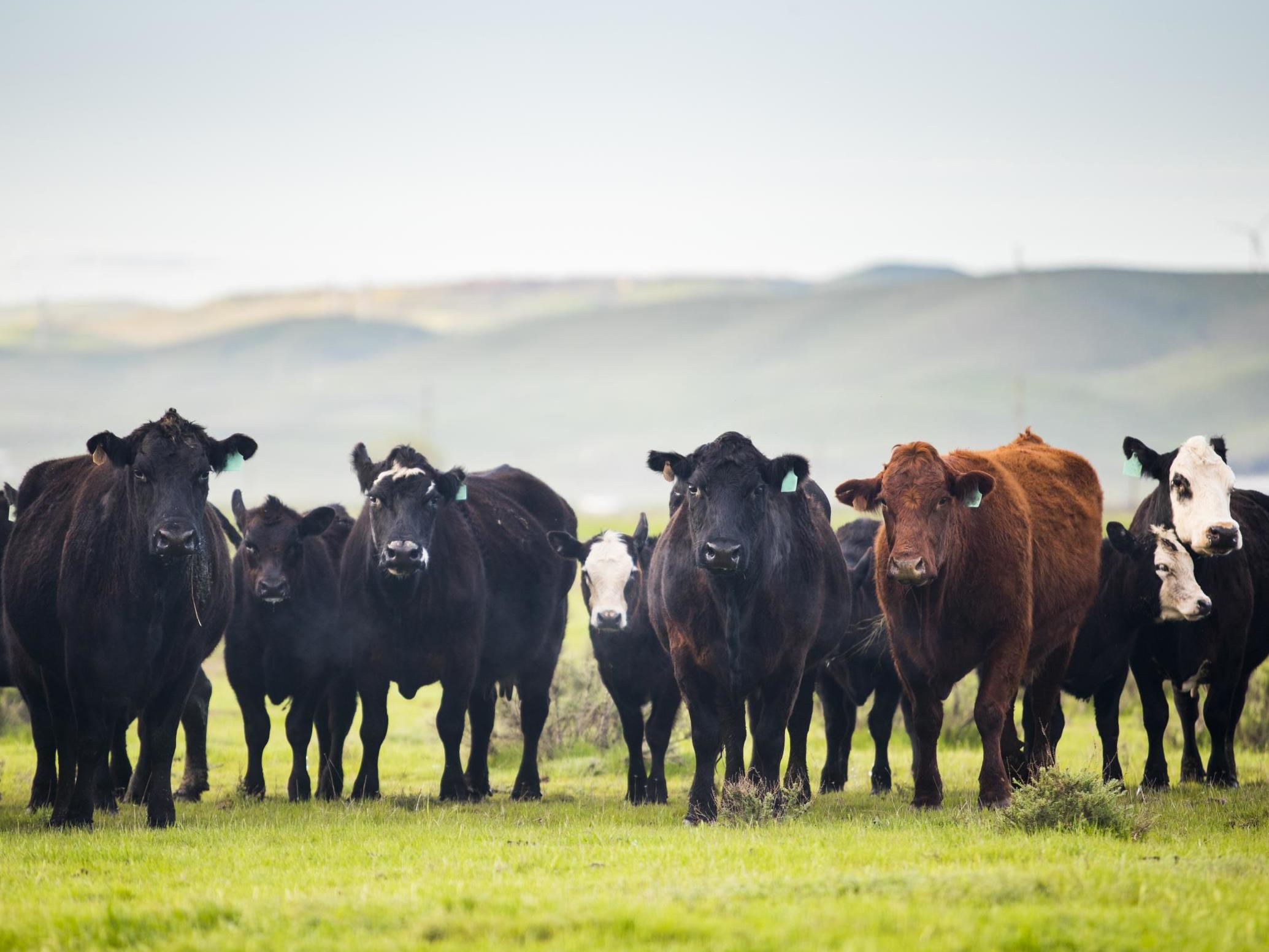Climate crisis: Methane reaches highest levels on record driven by fossil fuels, ranching and landfills
'People joke about burping cows without realising how big the source really is,' says the scientist who led the study

Your support helps us to tell the story
From reproductive rights to climate change to Big Tech, The Independent is on the ground when the story is developing. Whether it's investigating the financials of Elon Musk's pro-Trump PAC or producing our latest documentary, 'The A Word', which shines a light on the American women fighting for reproductive rights, we know how important it is to parse out the facts from the messaging.
At such a critical moment in US history, we need reporters on the ground. Your donation allows us to keep sending journalists to speak to both sides of the story.
The Independent is trusted by Americans across the entire political spectrum. And unlike many other quality news outlets, we choose not to lock Americans out of our reporting and analysis with paywalls. We believe quality journalism should be available to everyone, paid for by those who can afford it.
Your support makes all the difference.Global emissions of methane are at the highest levels on record, driven by coal mining and natural gas production along with ranching and landfills.
The emissions crisis comes following the news that carbon emissions have seen a temporary decline in the wake of the coronavirus pandemic, due to a drop in fossil fuel consumption from transport and industry slowdown.
The drop-off has not been mirrored in methane emissions as the heating of homes and buildings has continued, and agriculture is expanding.
From 2000 to 2017 methane levels increased to levels that, if continue, climate models forecast will lead to 3C to 4C of global heating by 2100.
At these temperature increases, climate breakdown intensifies. Scientists warn of greater threats of natural disasters including wildfires, droughts and floods, instigating famines and mass migrations.
More than half of all methane emissions come from human activities. Methane is a potent greenhouse gas, 28 times more powerful than carbon dioxide (CO2), at trapping heat over a 100-year span.
The last, comprehensive data on global methane levels from 2017 revealed that Earth’s atmosphere absorbed nearly 600million tonnes of the colorless, odorless gas that year, according to two papers published on Tuesday in Earth System Science Data and Environmental Research Letters, by a team from the Global Carbon Project led by Stanford University scientist Rob Jackson.
Annual methane emissions are up 9 percent, or 50 million tonnes per year, from the early 2000s, when methane concentrations in the atmosphere were relatively stable – equivalent to putting 350m more cars on the road or doubling the total emissions of Germany or France.
The main drivers behind the soaring methane levels are fossil fuels and cattle.
Dr Jackson said: “Emissions from cattle and other ruminants are almost as large as those from the fossil fuel industry for methane. People joke about burping cows without realizing how big the source really is.”
Agriculture accounted for around two-thirds of all methane emissions with fossil fuels making up the rest. Since 2000, those two sources have contributed in roughly equal measure to the increases, acording to the findings.
Methane emissions from agriculture in 2017 were up more than 10 per cent from the 2000-2006 average. In 2017, methane from fossil fuel production was up nearly 15 percent from the period in the early 2000s.
Methane emissions have rocketed in Africa and the Middle East, China, and South Asia and Oceania by an estimated 10-15m tonnes per year. In the US, methane emissions also increased by 4.5m tonnes per year, mostly due to the booming natural gas industry.
Dr Jackson said: "It’s offsetting coal in the electricity sector and reducing carbon dioxide emissions, but increasing methane emissions in that sector.”
Methane was not only being emitted from oil and gas wells but also from leaky pipelines, said Dr Jackson.
There's better news from Europe where methane emissions have dropped in the past 20 years, in part, by reducing emissions from chemical manufacturing, increased efficiency in food production and changes in diet.
Dr Marielle Saunois, of the Université de Versailles Saint-Quentin in France and lead author of the Earth System Science Data paper, said: “Policies and better management have reduced emissions from landfills, manure and other sources here in Europe. People are also eating less beef and more poultry and fish."
Tropical and temperate regions saw the largest spikes in methane emissions, according to the study. And despite fears that rapid melting in the Arctic may unleash more methane from thawing permafrost, researchers did not find increased levels in the polar region - at least until 2017.
Dr Jackson said that human-driven emissions were easier to quantify than those from natural environments.
“We have a surprisingly difficult time identifying where methane is emitted in the tropics and elsewhere because of daily to seasonal changes in how waterlogged soils are,” he said.
Curbing methane emissions will require vast reductions in fossil-fuel use, according to the scientists, along with stemming leaks from pipelines and wells, and changes to cattle farming and diets. Methane burps from cows could be reduced by feed supplements like algae. Tech solutions via aircraft, drones and satellites are also improving and could be used to monitor methane at oil and gas sites.
Join our commenting forum
Join thought-provoking conversations, follow other Independent readers and see their replies
Comments